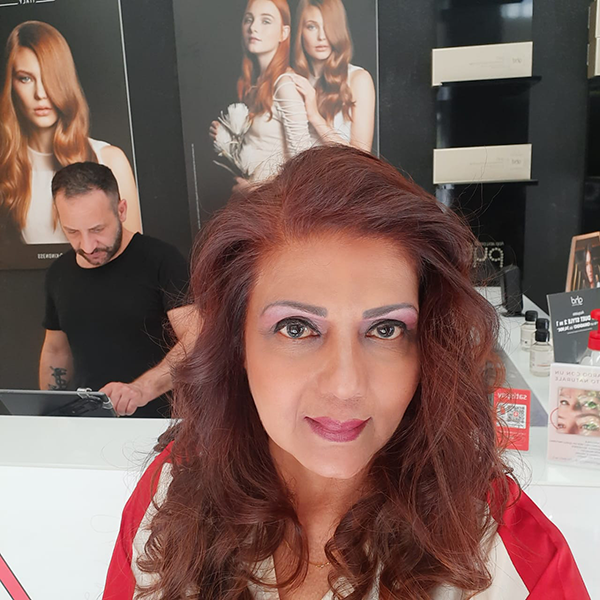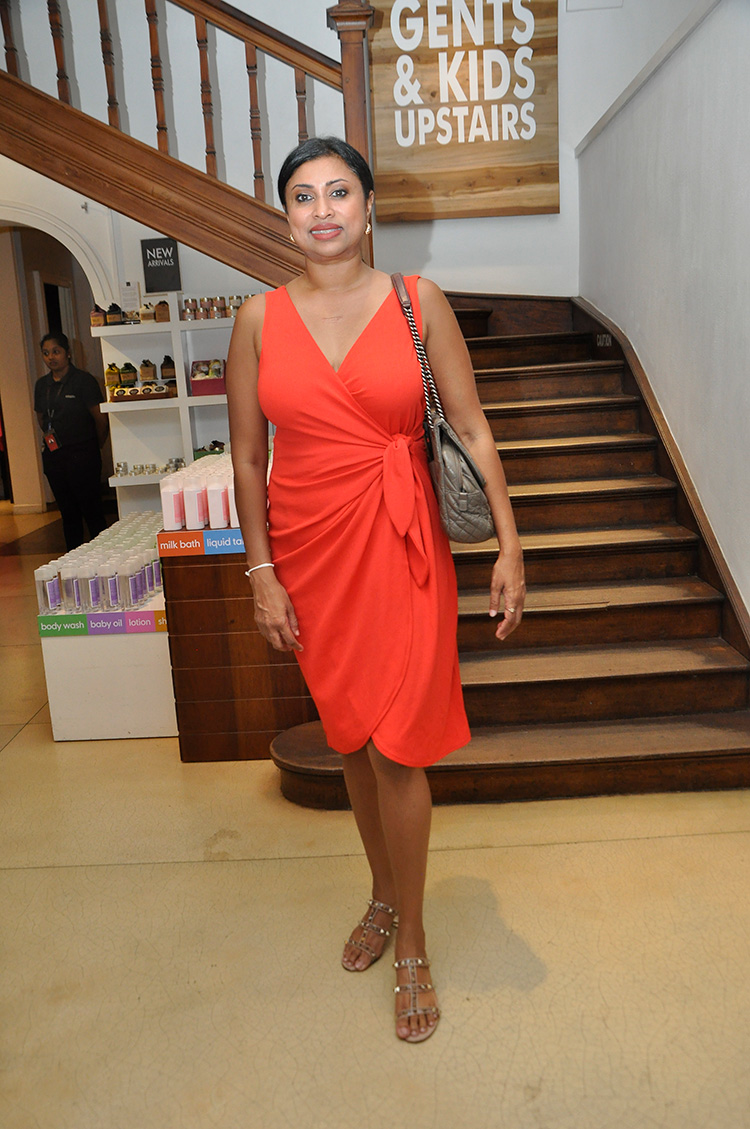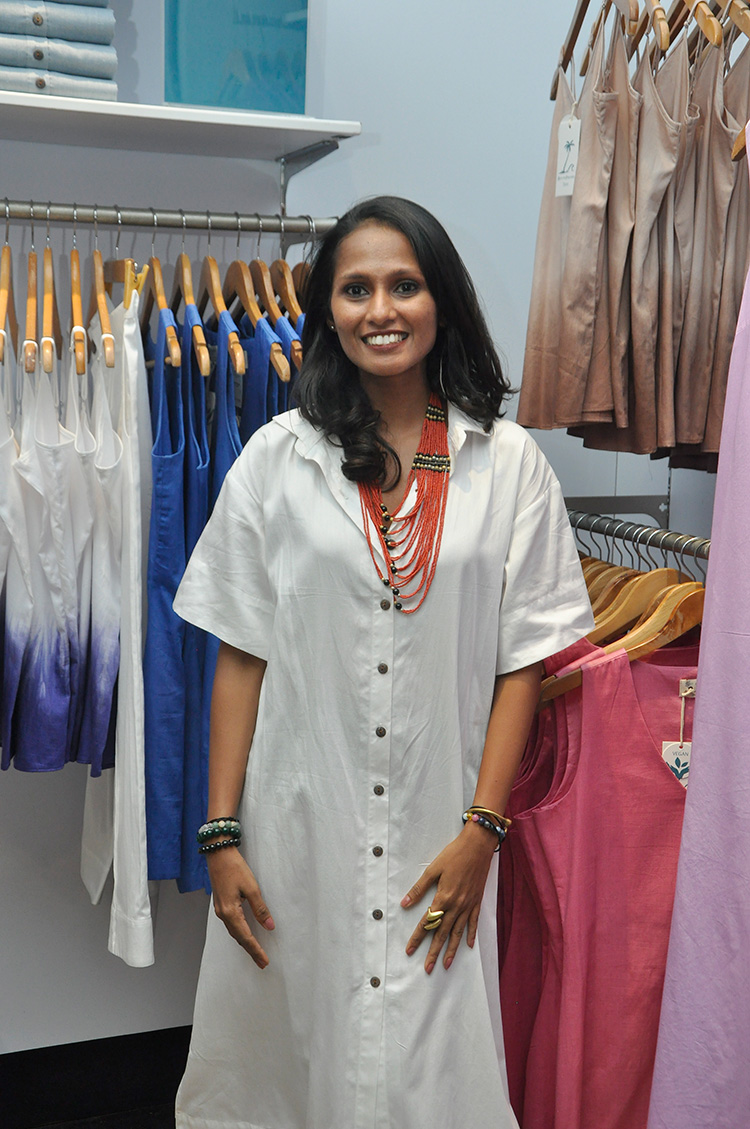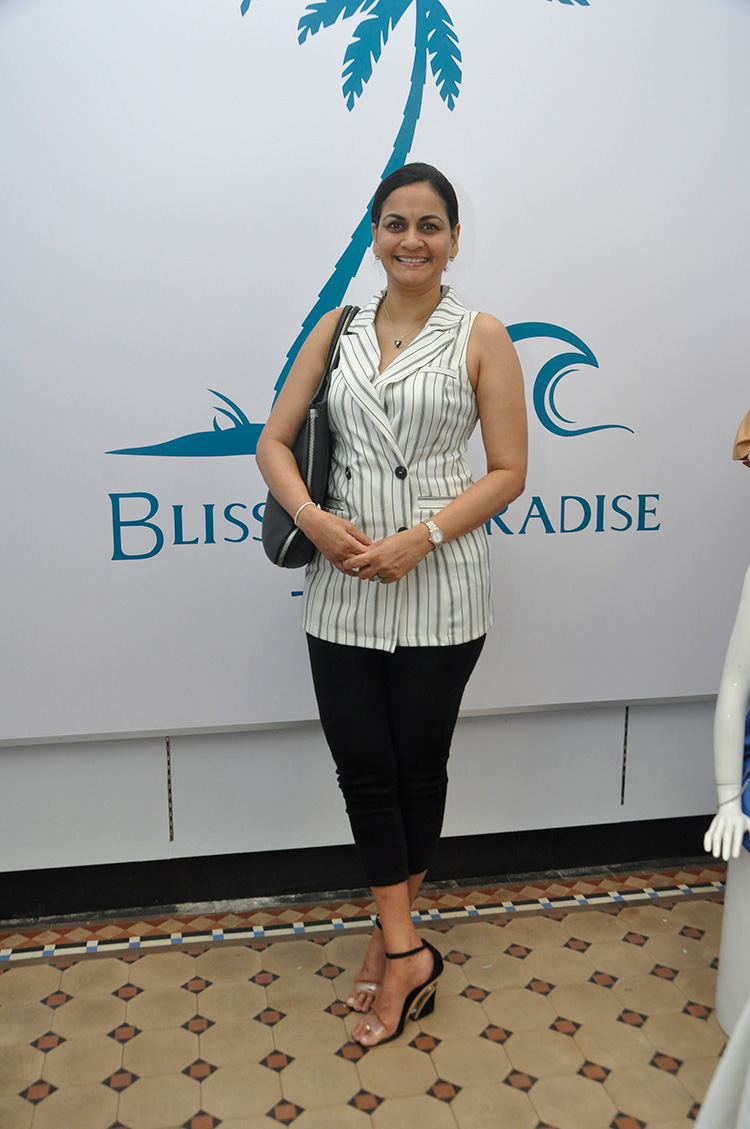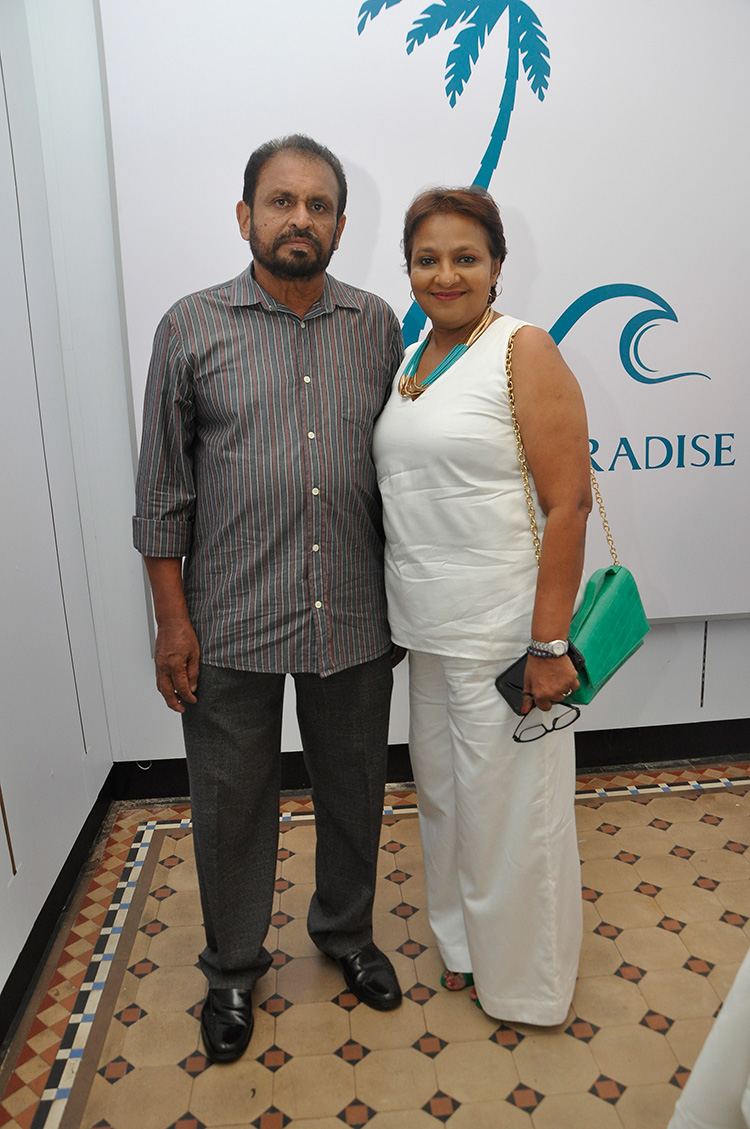Fashion
Sharmini of ‘Silk Wrap Fame’
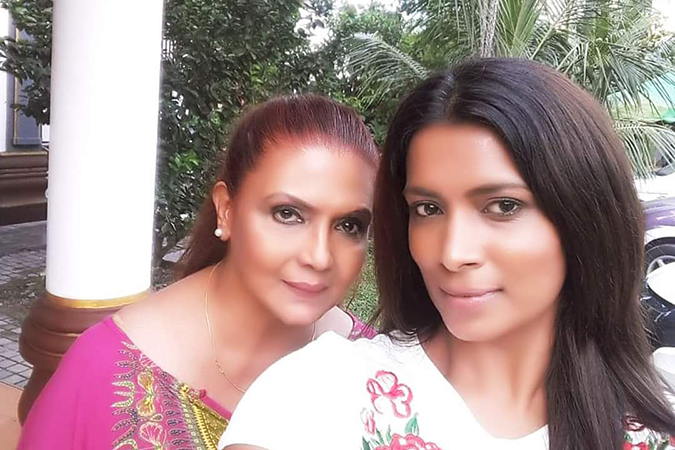
Sharmini Seneviratne is known for pushing boundaries and leading the next generation of elegant fashions. She was the founder of the popular designer label “Silk Wrap” Her ensembles appeal to every women from all ages,corporate women, celebrities, fashionistas and models. She looks beyond the shores of Sri Lanka, drawing inspirations from all over the world. Her work is infused with both simplicity and elegance.
and leading the next generation of elegant fashions. She was the founder of the popular designer label “Silk Wrap” Her ensembles appeal to every women from all ages,corporate women, celebrities, fashionistas and models. She looks beyond the shores of Sri Lanka, drawing inspirations from all over the world. Her work is infused with both simplicity and elegance.
Sharmini has made a name in the competitve business of Sri Lankan fashion industry, having made a successful stint here and abroad.Her passion for fashion and unwavering dedication led her to establish the popular label “Silk Wrap “, a brand that is recognised for glamour and elegance.
Q When did you start your career in fashion?
A My career as a fashion designer started after I stopped flying as a air hostess for Air Lanka I was always very fashion conscious as a kid, even use to cut up my mother’s sarees to dress my dolls, and later I entered the famous Fashion College in London St. Martins.
Q What inspired your entrance into the fashion industry?
A The flying career and my mother together inspired me into fashion . My parents were living in England, this helped me to explore and broaden my knowledge about all aspects of fashion This was the key to my fashion story, In the 60’s there was no Fashion, or fashion magazines in Sri Lanka only Rupavahini TV station, hence there was no exposure for Sr Lankan designers to international fashion shows. My fashion career was not easy. We had many ups and downs depended mainly on magazines like “Cosmopolitan” “Vogue” “Harpers Bazaar” and other magazines for inspiration
Q Tell us about the story behind the label “Silk Wrap “.
A “SilkWrap”, was named because my ensembles were all created from natural silks from Sri Lanka and Thailand. There was a dearth for ready to wear clothing at that time. My main focus was evening wear with silks and chiffons creating ensembles with glitz and glamour
Q How do you keep up with the fashion industry then and now?
A Fashion is something you create and it is unique,reflecting the culture, weather, moods, a mix of so many of them put together with a myriad of colours, feelings and love. The ethereal six yards of saree creates magic on any individual.
Q Highlight of your career?
A I have so many special moments in my fashion career, I’ve done many international catwalk shows reflecting my design. I have taken our local models to the international catwalks The benchmark in my career was the successful show in Tokyo. My designs made a hit and I sold all my ensembles, to 900 Japanese ladies. I also had had the honour of taking “Silkwrap” to Japan, Oman, Bangalore, Maldives, Dubai and London. I had the privilege of designing for Michael Jackson sister “Latoya Jackson. I was also a
Q Where do you get your inspiration for your designs?
A My designs are my own creations. My inspiration comes from nature, and derive from all things beautiful around me. A nice elegant cut, contemporary in design are my forte.
Q What are your challenges and how do you overcome them?
A I faced no challenge in my career. Each of the designers work differently and I respect their creativity. A
Q Your future plans ?
A I am proud that I have contributed to the progress of the fashion industry in Sri Lanka. We are on par with international fashion designers. All of us have worked without any assistance from the government.
Q Many of your designs explore modern day glamour what does it mean to you?
A I keep abreast with modern day designs, yet try to depend on classic and simple lines emphasing on cut and style.We are also all creative artist’s, who understand others needs and moods and designs accordingly which is not easy.
Q Present fashion industry in Sri Lanka?
A Over the years I have been following Colombo fashion weeks and other fashion shows.. Sad to say most of the designers have no originality in thier work. Designers like Senaka de Silva, Lo Ching, Yoland, Purnima, Darshi and Michele Wijesuriya are some of the designers who have created a benchmark in the local fashion scene.
Fashion
French model Ines in Sri Lankan spotlight

By Zanita careem
Modelling is sometimes an undiscovered and unknown way, it might be something that you have dreamed about and to your surprise you are destined to that route.This statement holds so true for Ines, a model from France, she is a model and she knows how to nail it. Ines believes in uniqueness and the moment the camera turns on she is there to give that unique and perfect shot. Her styling secret is to go elegant yet comfortable.Ines loves to work hard to be the perfect one out there and this could be something that could really motivate and inspire other people.
Q: Tell us a little about you and what was life growing up?
A: I’m Ines, born and raised in Paris with a family rich in values, primarily emphasizing independence and an entrepreneurial spirit.
I’ve had a passion for traveling ever since my mother took my brother and me on a year-long world tour when I was 12. Since then, I’ve pursued my studies in hospitality management online, and my journey led me to Sri Lanka, where I’ve been living for five years now.
Meeting people has helped me practice languages, and after traveling to more than 20 countries, I speak 4 languages including Sinhala. I live in the southern part of Sri Lanka where nature, tranquility, and the sound of the ocean reign.
Q: How were you discovered and how has your journey being so far?
A: As a hospitality student during the COVID lockdown, I was approached by clothing brands to work as a model. Prior to moving to Sri Lanka, I had done photo shoots for friends’ brands and especially for my mother’s jewellery line, but I never imagined having a professional career in this field.
I embrace challenges and seize new opportunities, hence I embarked on a career in modelling, which grew to such an extent that I established my own company as a freelance model. Additionally, as a dancer and artistic director, I also work on creative concepts that go beyond the typical photo shoots in Sri Lanka.
Q: Have you always had a passion for fashion and modelling?
A: I discovered this passion when I began posing in front of a camera. As a child, I always enjoyed shopping and dressing up, but I never imagined it would become my profession, especially since I struggled with my weight when I was younger. I believe that nothing in life happens by chance, and if I have fallen in love with Sri Lanka, it is for a reason. This country is full of opportunities; one simply needs to work hard and stand out from the rest.
Q: Biggest hurdle what are some obstacles you faced?
A: I do not encounter specific obstacles in my professional career, but my weakness lies in my sociability. I need to continue working and managing my energy and preserving it for projects that truly bring me happiness. Given the high level of tourism in the southern part of the country, interactions are plenty but can be challenging.
Q: Some latest and up coming projects?
A: The latest project I am currently working on is establishing a career in content creation. I aspire to express and unleash my creativity while collaborating with brands and hotels that hold significance to me. A future project that I have dreamt of for a long time is launching my own clothing brand… but everything takes its own time…
Q: Top tips that keep you looking youthful?
A: Appearing young is of no importance to me; what truly matters is feeling comfortable in one’s own skin and being happy. Youthfulness is largely defined by attitude and energy. What brings me happiness is my family, projects, travels, dancing, and surfing.
Q: What are some of the pros of being a model?
A: The benefits of being a model include constantly being on the move and sometimes even travelling. Additionally, I am deeply grateful for the attention and care that teams provide; it makes me feel like a princess. Representing a brand or company also fosters self-confidence and gratitude.
8. Q: If you could change anything about the fashion industry, what would it be?
A: If I were to change something in the fashion industry in Sri Lanka, it would be to encourage brands to be more creative and accept models of diverse body shapes. Moreover, it’s crucial for them to recognize the beauty of the majority of the population’s natural, dusky skin tones. It’s time to dispel stereotypes associated with fair skin. Sri Lankan dusky skin is beautiful, and it’s imperative to stop labelling it as inferior to fair skin.
Q: What is your mantra?
A: My life philosphy is one of positivity towards everything I do and everything that happens to me. There is always a lesson to be learned
Q: Some of your favourite designers?
A: My favourite designer is Kami Hewavitharane and a brand labelled the Colombo Batik brand.. This brand produces unique and colorful designs and thier collections are breathtakingly beautiful.
Q: If you weren’t a model what would you be?
A: In addition to my career as a model, I work as a manager in hospitality and restaurant management. It’s one of my passions. Otherwise, I would have liked to pursue a career as a professional dancer, but it requires years of practice.
Q: So, has your perception of the fashion industry changed over time?
A: My perception of the industry has not changed much, but I feel now the industry has moved forward for the better. There is originality and creativity amongst most of the designers, and I see an increasing number of women venturing into it, which pleases me.
Q: What was the most important moment in your life?
A: What a difficult question haha! So many beautiful moments, and even the tough ones, have contributed significantly to my growth and evolution. However, the most crucial moment was staying in Sri Lanka despite the COVID conditions and France’s requirement for expatriates to return. I stayed back and took up challenges to pursue my own brand.
Q: What do you think about the state of fashion today?
A: I believe that the state of the fashion industry in Sri Lanka is undergoing significant evolution, with Sri Lankans becoming increasingly independent, liberated, and enterprising.
Fashion
Black dress-versatatile and timeless
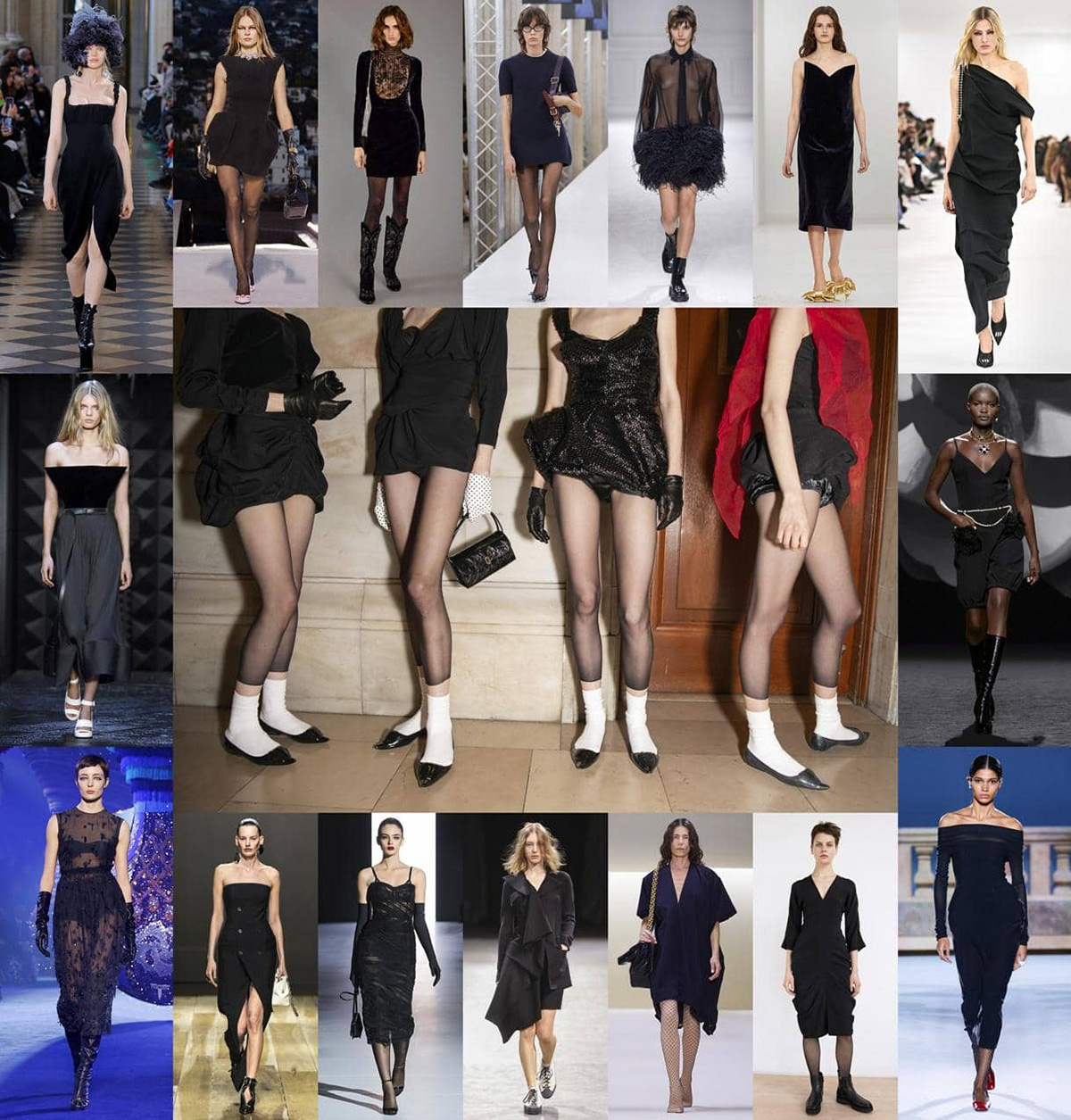
 The little black dress plays such a starring role in our wardrobes that it has its own special designation: the LBD. Vogue’s Hamish Bowles takes us through its history, decade by decade, from Coco Chanel to Cushnie on black dress.
The little black dress plays such a starring role in our wardrobes that it has its own special designation: the LBD. Vogue’s Hamish Bowles takes us through its history, decade by decade, from Coco Chanel to Cushnie on black dress.
It’s Mademoiselle Chanel who is credited with popularizing the look and, in doing so, making the colour black, previously worn only when in mourning or to express piety (as in ecclesiastical garb), fashionable. In 1926 Vogue dubbed a drawing of one of her snappy, drop-waisted LBDs, “The Chanel ‘Ford’—the frock that all the world will wear.”
They did, and do—men have recently gotten in on the game—though not all carry the Chanel label. In the 1950s, Christian Dior defined the look of the LBD: full-skirted and wasp-waisted. The little black dress Hubert de Givenchy designed for Audrey Hepburn in the movie Breakfast at Tiffany’s is as representative of the early 1960s as Yves Saint Laurent’s sheer, feather-trimmed number of the latter part of that iconoclastic decade.
Cocktail dresses and LBDs, which are defined by their short(ish) length, are often one and the same. One of the reasons neither will ever go out of style is that there are myriad ways to play “mixologist” with the spare, neat LBD to give it just the kick you want. Cheers!
The little black dress plays such a starring role in our wardrobes that it has its own special designation: the LBD.
In 1926 Vogue dubbed a drawing of one of her snappy, drop-waisted LBDs, “The Chanel ‘Ford’—the frock that all the world will wear.”
From the moment Coco Chanel presented it to the world in the 1920s, the eternal dress became a canvas that almost every designer wanted to weave something of their own into. Although it has moved away from its basic principles, the little black dress has retained the same charm and the same note of seductiveness it once had, and new variations, as with every season so far, also graced the runways in the fall/winter 2024 collections.
Ultra-short models shone on the runways from Tom Ford, Schiaparelli, Givenchy, Giambattista Valli to Ferragamo, as well as many others, proving once again that the little black dress is a garment that will function in every collection and that will, ultimately, also surely be worn. Although the models of these fashion names differ and each has brought their own vision to the iconic dress, what they have in common is that they all serve as a good reminder that the charm of the little black dress does not fade and that we will always return to it, precisely because it is so timeless and versatile.
From the moment Coco Chanel presented it to the world in the 1920s, the eternal dress became a canvas that almost every designer wanted to weave something of their own into. Although it has moved away from its basic principles, the little black dress has retained the same charm and the same note of seductiveness it once had, and new variations, as with every season so far, also graced the runways in the fall/winter 2024 collections.
Ultra-short models shone on the runways from Tom Ford, Schiaparelli, Givenchy, Giambattista Valli to Ferragamo, as well as many others, proving once again that the little black dress is a garment that will function in every collection and that will, ultimately, also surely be worn.
Although the models of these fashion names differ and each has brought their own vision to the iconic dress, what they have in common is that they all serve as a good reminder that the charm of the little black dress does not fade and that we will always return to it, precisely because it is so timeless and versatile.
Fashion
Groundbreaking new collection from Vegan fabric

At a very young age Thushani Rodrigo discovered her love for fashion. An entrepreneur and a fashion designer, she loves to create clothes and garments for people to wear with pride.
 Sri Lanka’s fashion landscape is about to experience a transformative shift as Thushani Rodrigo, the visionary founder of Todos, introduces Bliss in Paradise her latest collection with the inspiring ethos, “Wrap Yourself in Kindness.” Under the theme “Fashioning Tomorrow,” Thushani’s collection invites individuals to embrace Vegan Silk as a symbol of kindness towards animals and the environment.
Sri Lanka’s fashion landscape is about to experience a transformative shift as Thushani Rodrigo, the visionary founder of Todos, introduces Bliss in Paradise her latest collection with the inspiring ethos, “Wrap Yourself in Kindness.” Under the theme “Fashioning Tomorrow,” Thushani’s collection invites individuals to embrace Vegan Silk as a symbol of kindness towards animals and the environment.
The ethos “Wrap Yourself in Kindness” embodies the essence of Thushani’s collection, emphasizing the importance of compassion and sustainability in fashion. Through the use of Vegan Silk, derived from eco-friendly plant sources, Thushani encourages individuals to adopt a lifestyle of kindness towards animals and the planet.
Despite facing a hearing impairment, Thushani Rodrigo’s passion and determination have propelled her to remarkable heights in the world of fashion. At the age of 16, she earned her Diploma in-Dress Making from Singer School, laying the foundation for her entrepreneurial journey.
Today, Thushani stands as a beacon of innovation and sustainability in the fashion landscape. Her latest venture, which will be retailed at Cotton Collection underscores he- unwavering commitment to ethical fashion practices and environmental responsibility.
Vegan silk, also known as “plant-based silk” or “cruelty-free silk,” serves as the cornerstone of Thushani’s groundbreaking collection. Derived from sustainable plant sources, Vegan Fabric offers a sustainable and animal-friendly alternative to traditional silk.
Thushani’s designs, meticulously crafted from Vegan Fabric, embrace the female form while seamlessly blending sensuousness with practicality.
The launch of Thushani Rodrigo’s Vegan Fabric Collection with Cotton Collection heralds a new era of sustainable fashion in Sri Lanka. By embracing cruelty-free materials and ethical production practices, Thushani paves the way for a more conscious and compassionate fashion industry.
Join us in celebrating this monumental milestone in sustainable fashion as Thushani Rodrigo and Cotton Collection redefine the future of style with their innovative Vegan Fabric Collection.
For media inquiries, please contact: Ruwanthi Rodrigo 0777660477
- Talented Tushani Rodrigo
Pix by Thushara Attapathu

